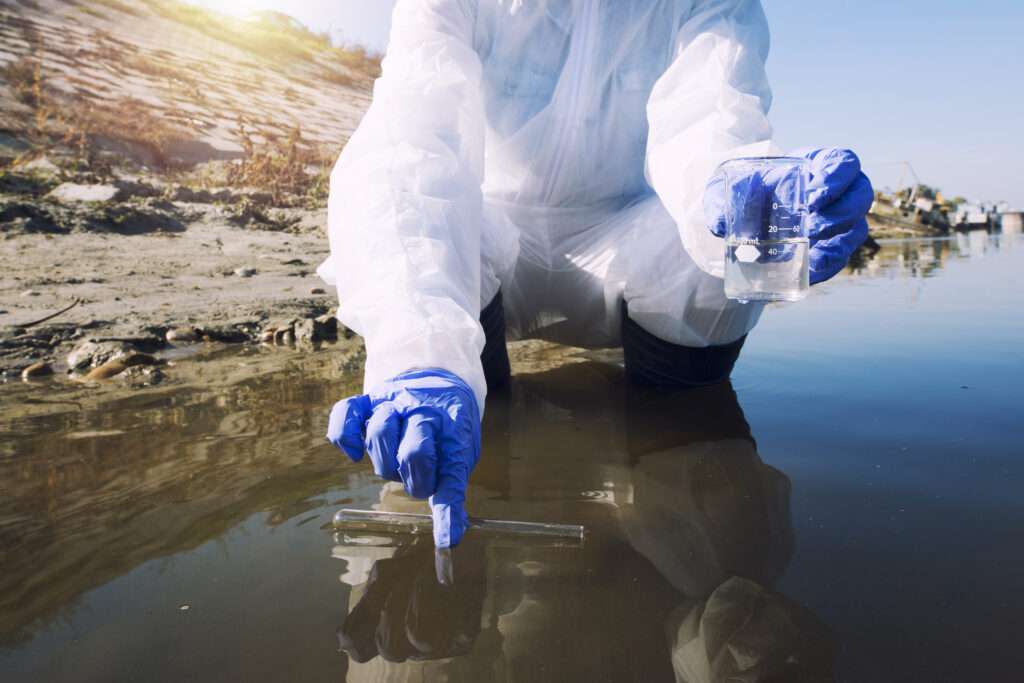With the rapid advancements in technology and innovations, the pace of change in the modern world has accelerated. This has led to an increase in challenges related to sustainability, environmental degradation, biodiversity loss, and social inequity. As a result, there is a pressing need to adhere to the principles of Thrivability. This focuses on avoiding harm and emphasises creating systems where people and communities flourish. At the same time, it shifts the focus from merely surviving to truly thriving. Central to this are risk management strategies such as the precautionary principle. This proactive approach advocates for limiting actions, policies, or technologies that may pose potential harm in the absence of scientific evidence. It becomes especially important when the risks could lead to irreversible or widespread damage.
What is The Precautionary Principle?
While many definitions of the precautionary principle exist, one of the widely accepted accounts comes from the principle 15 of the Rio Declaration on Environment and Development (1992, Rio Earth Summit) which states as follows-
“In order to protect the environment, the precautionary approach shall be widely applied by States according to their capabilities. Where there are threats of serious or irreversible damage, lack of full scientific certainty shall not be used as a reason for postponing cost-effective measures to prevent environmental degradation.”
The precautionary principle is quintessentially a ‘better safe than sorry approach’. It advocates taking preventive action in the face of uncertainty to avoid potential harm, rather than waiting for full scientific evidence that may come too late to prevent damage. It encourages moving with caution to safeguard the future. The principle is ever-evolving with some countries referring to it as the precautionary ‘approach’ (Hayes, 2005). The precautionary principle may seem strict while the precautionary approach may be less legally binding and offer flexible interpretation. There also exists both strong and weak versions of the precautionary principle.

Source: Freepik
Weak Vs. Strong Narrative
In its simplest form, the precautionary principle suggests that uncertainty about environmental risks should not automatically postpone actions to restrict or regulate the activity (Stewart, 2002). In other words, the principal encourages reasonable precaution even when faced with limited or incomplete scientific information. It allows room for innovation as long as the potential risks are properly managed.
The strong version takes on a more assertive approach. It asserts that regulators should assume any potentially harmful activity, without scientific proof, will have the worst possible outcomes. Regulators should then ban the activity or require them to use the best technology available to make it safer. Additionally, those proposing the activities are responsible for providing evidence of safety, instead of waiting for regulators to prove harm (Stewart, 2002). An example of such an approach would be prohibiting deep-sea mining without a comprehensive environmental impact assessment activity conducted and verified. Such an approach ensures that the burden of proof lies with those proposing the activities. It also ensures that environmental protection takes center stage.
The Precautionary Principle in A Local and Global Context
The precautionary principle finds its place in numerous environmental charters, legislations, and international treaties around the world. In Australia, the precautionary principle is a fundamental aspect of the guiding principles of the National Strategy for Ecologically Sustainable Development and the Inter-Governmental Agreement on the Environment (IGAE) (1992). It is also primarily applied in the Environment Protection and Biodiversity Conservation Act (EPBC Act Sect 391,1999). As a result, it guides decisions on activities that could potentially cause environmental harm, even if scientific certainty is absent. This includes areas like fisheries management, Great Barrier Reef protection, development approvals, and natural resource management.

Source: Environmental Justice Australia
A notable example of the precautionary principle in legal action in Australia is the Leadbeater’s Possum case. This involved environmental groups seeking to halt logging operations by VicForests in Victoria, Australia. The logging posed a threat to the vital habitat of the critically endangered Leadbeater’s possum and the Great Glider species. The court ruled in favour of the environmental groups and determined that VicForests violated state and federal laws designed to protect biodiversity. Moreover, the court noted that they failed to implement the precautionary principle in their operations.
European Union
Similarly, the European Union has integrated the precautionary principle into its regulatory framework. Article 191 of the European Commission’s Treaty on the Functioning of the European Union (TFEU) requires all environmental policies to follow the precautionary principle. The EU’s regulatory framework for chemicals (REACH) and the general regulation on food law also incorporates the precautionary principle. An example of its application is the European Union’s ban on the insecticide Chlorpyrifos in 2020 owing to possible health risks. The EU also strictly regulates the Genetically Modified Organisms or GMOs, emphasising safety, transparency, and the rights of the consumers. The EU mandates that any GMO needs to undergo rigorous scientific study before being approved for release or cultivation. In the absence of certainty about its long-term impacts, the precautionary principle can be applied to restrict or prohibit its use.
Concerns With the Precaution Principle
Critics of the precautionary principle argue that it provides too much discretion to the decision-makers. This leads to unpredictable and inconsistent outcomes. As a result, it can result in policies that lack uniformity, creating confusion for businesses, regulators, and the public. Moreover, this uncertainty can lead to an increase in costs for businesses and disrupt their plans by delaying actions and discouraging investments, creating an unfavorable business environment (Wills, 1997). The principle is also criticised as being vague in its presentation and may result in different interpretations of the same rule. Additionally, the lack of a clearly defined decision-making process can lead to legal disputes (Goldstein, 2007).
A key argument against the precautionary principle is the concern that it hinders new technology and innovation. In its strictest form, it creates a barrier to development and distracts from addressing more serious issues like environmental risks or emerging diseases. For instance, delaying the release of a potentially life-saving drug while awaiting scientific evidence of its safety could stifle medical advancements and cost lives. In addition to this, shifting the burden of proof onto the developers to prove their activities safe may result in raised costs. (Peterson, 2006). Such restrictive regulations may discourage businesses from innovating, particularly in fields like biotechnology.
The Precautionary Principle and a Thrivable Future
The precautionary principle and the concept of thrivability intersect through their shared focus on responsible decision-making, sustainability, and long-term well-being. The precautionary approach aims to reduce risk and prevent harm in the face of scientific uncertainty. Thrivability takes things a step beyond mere sustainability by rethinking and redesigning systems that are resilient and flourishing.
By integrating these two approaches, organisations can achieve a balanced and future-oriented strategy. The precautionary principle ensures rigorous assessment for any potential future risks. At the same time, thrivability encourages organisations to propose solutions rooted in the THRIVE Framework. This ensures that innovative solutions are not stifled but are guided instead by responsible thinking.
For example, the precautionary principle would propose to reduce pesticide use owing to the lack of evidence of safety. At the same time, a thrivable approach would promote and advocate farming methods that restore soil health and promote biodiversity. This shift turns precaution into an opportunity for sustainable innovation.
Another example of integrating precaution with thrivability would be in urban planning. The precautionary principle would prevent building in flood-prone areas to minimise the risk of future homes flooding and therefore displacement. At the same time, thrivability would guide the design of cities incorporating green spaces, renewable energy, and waste management systems.
A Thrivable Framework
The THRIVE Framework is a holistic regenerative framework used to assess the activities and strategies of organisations against 12 Foundational Focus Factors (FFFs) that can help tackle environmental and social issues and build a world that can thrive. The 12 foundational factors are Systems Thinking, Finite Resources, Complex Wicked Problems, Entity Model, Materiality Integral Thinking, Science-Based Targets, Context-Based Metrics, Strong Sustainability, Values-Based Innovation, Multi-Capital, and Regenerative Economy.
The precautionary principle strongly aligns with the concept of Strong Sustainability within these FFFs. Strong Sustainability firmly emphasises that we must preserve and protect natural resources, ecosystems, and social systems. This should be done even if it involves short-term costs or restrictions on development. In other words, it advocates to prevent potential harm before it occurs. This helps foster responsible innovation while safeguarding future generations. Through its integration, the precautionary principle and Strong Sustainability can ensure responsible innovation while safeguarding future generations.
Call to Action
Businesses or organisations have the power to lead transformative changes through responsible innovation by incorporating the THRIVE Framework and precautionary principles into their strategies. Additionally, policies and legislation need to be clear in their interpretation of the precautionary principle to enhance risk management while ensuring the thrivability of the planet, communities, and businesses.
THRIVE Project develops innovative solutions and Sustainable Business Models to create a more resilient Earth. THRIVE focuses on creating positive outcomes that go beyond sustainability through research and education. It seeks to empower people, organisations, and communities to adopt practices that protect and preserve the planet and society. The Project offers comprehensive guidance and tools to shift focus from traditional approaches to restorative and regenerative models. Please visit the website to access a wealth of resources including blogs, webinars, and whitepapers, and learn more about how businesses and communities embrace thrivability. Subscribe to our monthly newsletter here and follow us on LinkedIn to stay updated on the latest news.

















